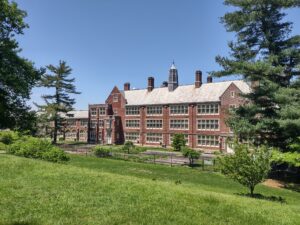Scarsdale, Westport among the top school districts nationwide

We don’t have to tell readers that choosing a school is one of the key factors in life success and that the quality of schools varies from community to community. Many schools have a catchment area, which is the designated area in which the school operates and enrolls most of its pupils. However, some schools do allow pupils from outside this area to enroll.
Experts at TeachSimple, a teacher resource and support site, have analyzed reviews and ratings of each school district in the United States and have ranked them from highest to lowest, with five being the highest and one the lowest. The scores are based on reviews from parents and students, statistics from the U.S. Department of Education and user-submitted information from schools.
Nationally across the U.S. there is a student-teacher ratio of 17:1, meaning that there are 17 students for every teacher. However, this number can only be used as an indication of class size and not as the true number of students. The national average expense per student is $12,239. This amount is used for teaching materials and student support services.
Radnor, Pennsylvania, ranks first with 4.70/5. Radnor has a student-teacher ratio of 14:1, and the average annual teacher salary in the district is $101,804. The district receives an average of $26,584 per student, and the majority of this is used for teaching and instruction materials.
South Texas Independent, Texas, is second with 4.65/5. The South Texas Independent district has a student-teacher ratio of 17:1, with more than 50% of students eligible for free school meals. The average expense per student is $15,039.
Roslyn Union, New York, is close behind in third with 4.63/5. Roslyn Union has a high proficiency in both reading and math. The district also has a lower ratio of students-teachers at 13:1 and an average expense of $32,874 per student.
Hewlett-Woodmere Union, New York, ranks fourth with 4.56/5. Here 23% of students are eligible for free or reduced lunch in the district and the average expense per student is $41,507. The district has a low student-teacher ratio of 10:1, which could indicate more bespoke teaching in classes.
Eanes Independent, Texas, and Scarsdale Union Free School District are joint fifth with 4.47/5. Both districts have a lower student-teacher ratio than the national average, with Scarsdale Union having one of the lowest at 12:1. Reviews by former and current students mention the excellent sports programs at schools within Eanes Independent School District.
Great Neck, New York, is sixth on the list at 4.39/5. Great Neck’s teachers are paid an average of $133,045 annually and have a lower-than-average student-teacher ratio of 11:1.
Westport, Connecticut, is seventh at 4.38/5. Almost 5% of teachers in the district are in the first or second year of teaching and are paid an average of $97,725 annually.
In joint eighth are San Dieguito Union, California, and Syosset Central, New York, at 4.31/5. While Syosset Central School District has a student-teacher ratio of 11:1, San Dieguito’s ratio is higher than the national average, standing at 25:1.
Rounding out the list are Ladue, Missouri, at 4.30/5; Township High School District 211, Illinois, in 10th place at 4.25; Half Hollow Hills, New York, at 4.24/5 in the 11th spot. Joint 12th place goes to Jericho Union, New York, and Palo Alto Unified, California, at 4.14/5 and finally, Tredfyrrin, Pennsylvania at 3.97/5.
A spokesperson for TeachSimple commented on the data:
“School districts are governed by town councils and local-level government. As such, the funding and level of education offered differ depending on the finances available to that district.
“The federal government funds schools through programs such as the Child Nutrition Act or Title I grants. These target low-income students and families in need of help. In 35 states, the state government has set a base level of funding for all school districts but overall, each state has a different funding formula to determine how education will be funded.
“Districts with more funding can have programs that support families and schools to give their students the best chance in life. These districts rank highly due to the variety of programs that parents can use and the quality of their education. With after-school programs in place, teaching children sports or arts can lead to a more well-rounded student.” – edited by Georgette Gouveia